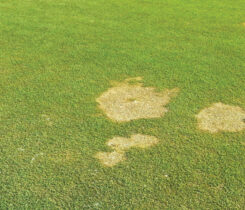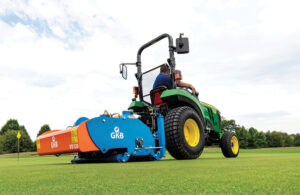What’s next for water conservation in the golf industry?
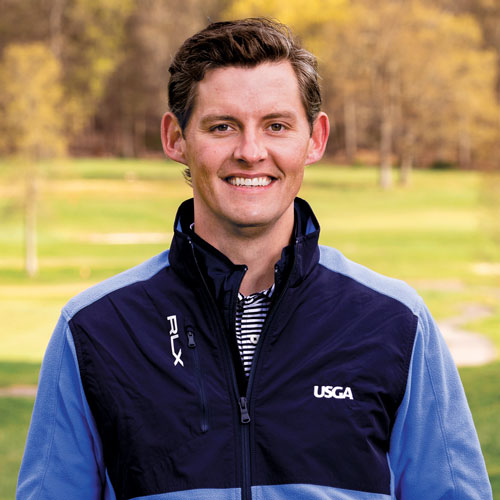
Cole Thompson
By now, you’ve probably heard someone spout the notion that golf courses are major water wasters. You’ve probably had to hold back from immediately explaining why that’s not true.
Those in the industry know that golf courses don’t waste water. In fact, golf course superintendents are among the most effective water managers in the world. Of course, there can always be room for improvement.
The future of irrigation and water management is an ongoing effort. Through its Mike Davis Research Program, the United States Golf Association (USGA) is a major part of that initiative, in partnership with superintendents across the country.
“Superintendents do a good job of managing water and resources,” says Cole Thompson, director of turfgrass and environmental research at the USGA. “It’s exciting to talk about the research grants and all of this new technology, but (the USGA and others in the industry) are just here to bring it all together so we can get better.”
The USGA established its Davis Program in 1982 — then known as the Turfgrass and Environmental Research Program — as a research initiative to address issues related to golf course management, including water conservation and resource optimization.
In the 41 years since its launch, the program has seen its fair share of wins, from better ways to schedule irrigation to improved drought-tolerant turfgrasses. What’s next for the Davis Program as the USGA ups its commitment to water conservation?
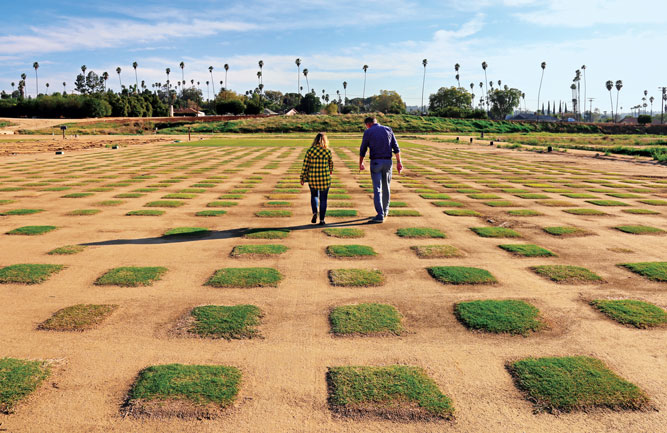
Turfgrass research is a crucial component of the continued improvement of water conservation by golf course superintendents. (Photo: USGA)
Solving the water problem
On the surface, turfgrass breeding programs might not seem like they directly influence water usage and conservation, Thompson says. In reality, it’s one of the most important factors in growing golf’s presence as a water conservation leader.
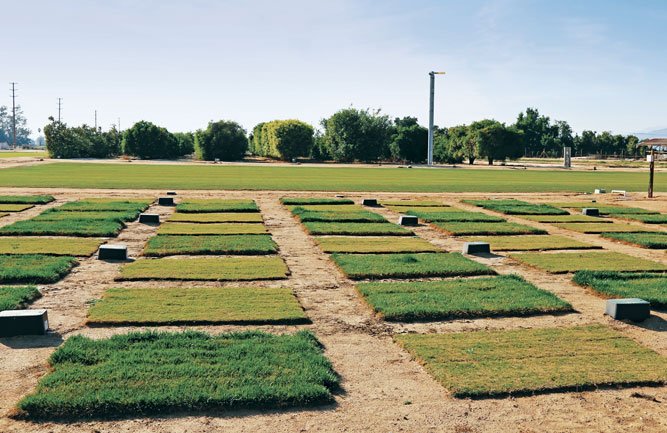
(Photo: USGA)
“Breeding programs really set the stage for water conservation,” says Thompson. “There are several projects where we’re directly advancing water conservation, and then there are projects, like breeding programs, where it’s maybe not readily apparent that is happening.”
One such project — part of the Davis Program class of 2023 — at Rutgers University aims to evaluate the use of warm-season grasses (zoysiagrass, bermudagrass and creeping bentgrass) in the northern transition zone.
“The idea behind the project is to, first, see which ones can survive and what kind of quality they provide, and then secondly, determine the irrigation requirements and other management practices needed to maintain those conditions,” he says.
Thompson adds that drought-tolerant turfgrass research will play a significant role in water conservation efforts as the transition zone continues to migrate north due to rising temperatures.
“We’ve got all of these materials now, and we just need to get more widespread adoption of some of these grasses,” he says. “With that comes finding ways for quick establishment, so there’s less downtime on the course. Also, how we can do that in an economically viable manner?”
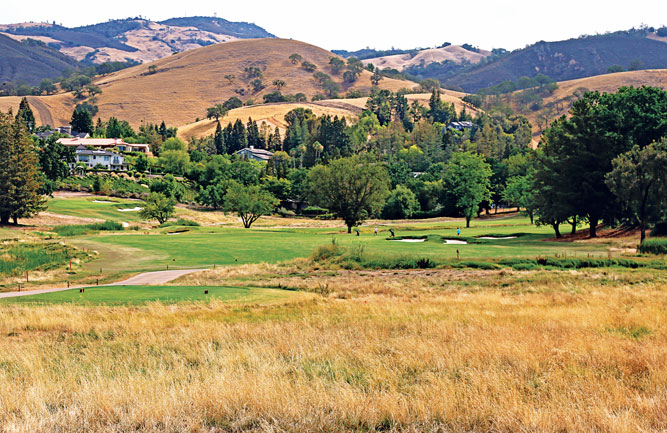
In conjunction with drought-tolerant turfgrass, more native areas are a potential solution to water usage concerns. (Photo: USGA)
He continues, while there are encumbrances to adopting some of these grasses, that’s something the project will work to reduce.
“Those are some of the things that we hope this project can work through and find out,” he says. “What is the ROI on this grass? And how can you tell that story to whoever is paying the bills to say, ‘Hey, we need to do this.’”
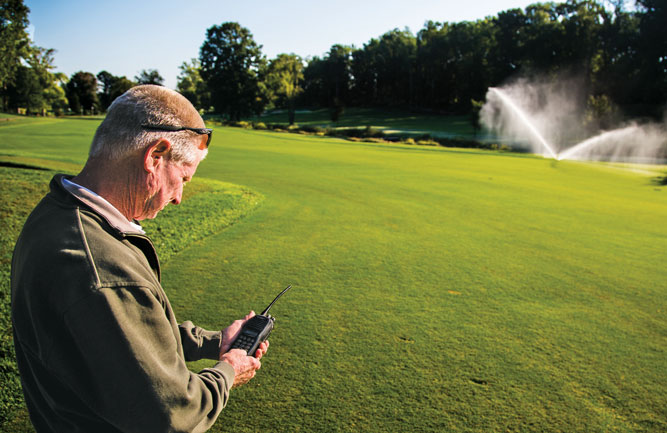
Superintendents have more technology at their disposal than ever before, giving them the tools to be master water managers. (Photo: USGA)
A better way to irrigate
Soil moisture sensors aren’t new to the golf world. Thompson says their increased usage on courses across the country has been — and will continue to be — a major part of the future of irrigation.
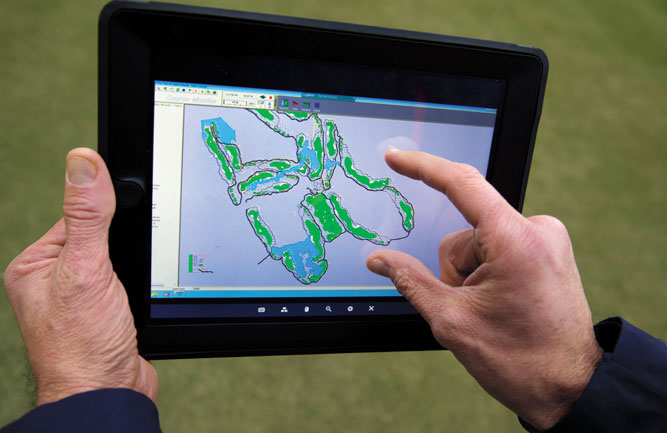
(Photo: USGA)
“That’s been a big win for the industry driven by the Davis Program,” he says. “(Moisture sensors) were used in turf research in the ’80s, but when they became commercially available, they were a bit slow to take off. But now we know, if you want to know when you need to water, soil moisture (testing) is the best way to do it.”
Advancing the use of soil moisture sensors for irrigation scheduling has been important in water management.
Thompson points to Davis Program-funded research projects at Kansas State University and the University of Minnesota, which both demonstrated significant water savings of 50 to 80 percent with the use of soil moisture sensors compared to evapotranspiration-based (ET-based) scheduling.
These projects found efficient ways to use sensors on golf courses, optimizing irrigation based on representative sensors in different soil zones. The projects highlighted the potential for reducing irrigation between rain events and showed the benefits of soil moisture sensing in water conservation.
In the future, Thompson says soil moisture sensors will work in tandem with other promising technologies — like GPS and drones — to make superintendents better water managers.
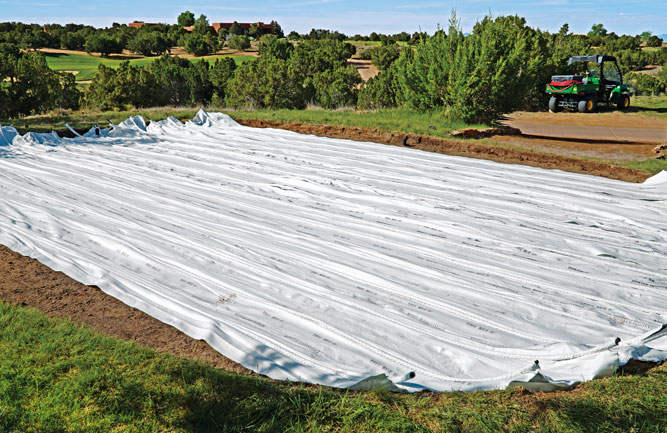
Changes in irrigation methods, such as subsurface drip irrigation on tees, are one way to keep quality while reducing water usage. (Photo: USGA)
By sea, land and air?
Irrigation tech isn’t just limited to the ground, however. It’s begun to take to the skies as well.
“Another thing that people are really excited about is the use of drones that have either a thermal sensor or an NDVI camera on it that can tell you information about the surface of the plant,” says Thompson.
That information includes the surface temperature of the turf and how well it absorbs light, which gives superintendents more data to influence their decisions.
“There’s definitely a validity in using these technologies, but there are also many things that can affect the reading that those sensors can give you,” he says. “It’s not as simple as taking a drone out of a box, getting it up in the sky and having it tell you how much water you need to use.”
Thompson says the USGA has ongoing research into how superintendents can weed through the data drone cameras give them and make an informed irrigation decision with it.
Projects exploring the adaptation of microwave radiometry, a ground penetrating radar used by NASA for estimating soil moisture, to turfgrass management are also being pursued.
“There’s a project at New Mexico State (funded by a 2023 Davis Grant) that is focused on taking these satellite-based radiometers and correlating them with soil moisture to decide if they’re enough to inform irrigation decisions,” Thompson says.
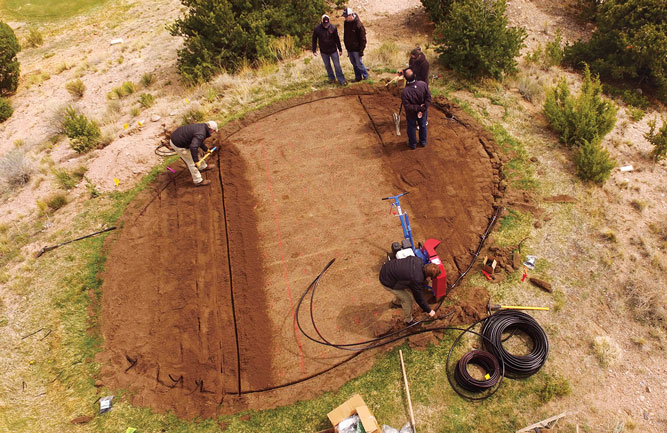
(Photo: USGA)
Always learning
Golf course superintendents are open to embracing innovative approaches to conserve water and improve irrigation practices, Thompson says.
Through combined scientific research, practical expertise and industry collaboration, golf courses — with the help of bodies like the USGA — are poised to become even more effective water managers in the future.
He adds that constant improvement is a shared goal between the USGA and golf course superintendents.
Thompson says the USGA values the practical experiences and insights of superintendents, which inform their research and recommendations.
“We learn as much from golf course superintendents as much as we teach them,” he says. “They’re the ones who are applying the research and the recommendations we’re making. There’s bilateral communication there with both education and looking for opportunities where we can do more.”










